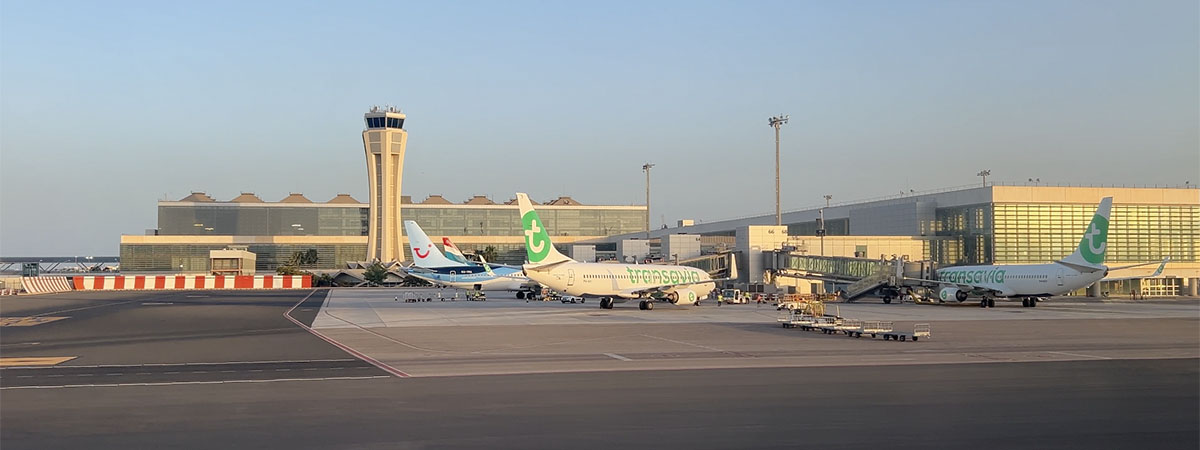For many years, air transport has been a key driver of connectivity, tourism, and economic development. To sustain their growth, airports require modern, efficient and safe facilities that are tailored to the sector’s natural evolution. However, financing and managing these strategic assets poses a challenge for public agencies, particularly in contexts of budget constraints or the need for rapid expansion. Against this backdrop, the Public-Private Partnership model is emerging as an effective way to drive investment and operational efficiency in the airport sector.
A Public-Private Partnership (PPP) is a long-term agreement between a public entity and a private company, in which the latter takes on responsibilities related to the design, construction, financing, operation and/or maintenance of public infrastructure. In return, the private partner receives revenue for the duration of the contract, whether through fees, charges or government payments, depending on the type of PPP.
The PPP model has cemented itself as an efficient and flexible instrument to face the challenges of airport development.
In the airport sector, this model makes it possible to mobilise private investment to develop or modernise key infrastructure without the state having to bear the full initial cost. It also enables the incorporation of technical expertise and management capabilities from specialised operators, in an effort to improve service quality, increase efficiency and accelerate project execution. At the end of the contract, which is always subject to a fixed term, the infrastructure reverts to public ownership, but with greater added value and a track record of professional operation.
In recent decades, many countries have adopted the PPP model to modernise their airport network. From major international terminals to regional airports, PPPs have proven to be a versatile tool, capable of adapting to different contexts and needs.
Possibly one of the regions where this model has gained the most relevance in recent years is Latin America, where demand for air connectivity has been growing steadily. For example, in Brazil, following the completion of an ambitious airport concession programme, more than 90% of the country’s air traffic is now managed under private participation schemes. In the most recent rounds, international operators such as Aena (Spain), Vinci (France), and Zurich Airport have taken over the management of key terminals, including Congonhas (São Paulo), Salvador de Bahia, and Curitiba. The result is the establishment of a modern network with committed investments exceeding $10 billion.
In Peru, the government has declared that all future airport expansions or constructions will be carried out under the PPP model. In fact, the country already has three major active concessions: Lima International Airport, the northern and southern regional airport groups, and a third concession currently being structured, which will include the future operation of the new Chinchero Airport (Cusco). This strategy leverages private sector expertise to ensure that new airports operate to high standards from the moment they open.
Colombia’s National Infrastructure Agency (ANI) has renewed concessions like the one for Cartagena Airport, and is preparing new contracts for terminals in San Andrés, Popayán, and the future El Dorado II in Bogotá. These projects combine infrastructure investment with the modernisation of airport operations.
In Chile, a pioneer in airport concessions, the PPP model is in place across almost its entire main airport network. The new international terminal at Santiago Airport, built by the concession operator, began operations in 2022, and new concessions have been awarded for airports such as Concepción and Puerto Natales. The country continues to refine its contracts to ensure economic and financial balance, as well as long-term sustainability.
In Mexico, the three major private groups (ASUR, GAP, and OMA) continue to successfully manage a wide network of terminals. Airports such as Cancún, Guadalajara and Monterrey surpassed pre-pandemic traffic levels in 2023, demonstrating the strength of the model. Although the government has opted for public management at the new Mexico City airport, PPPs are being considered for other regional terminals operated by Aeropuertos y Servicios Auxiliares (ASA).
In the case of Spain, Aena has proven to be a leading global operator, with extensive experience in airport management that has allowed it to export the PPP model to other countries. A notable example is the awarding of 11 airports in Brazil in 2022, including the strategic Congonhas in São Paulo, for a 30-year period, solidifying Aena as the largest airport operator in the South American country. The combination of public capital and private efficiency that characterises Aena has become a successful model for export.
Key factors for a successful airport PPP
To make a PPP airport project effective and sustainable, it is essential that it be structured on solid foundations:
- Rigorous technical diagnosis: The success of a PPP depends on the project being properly scaled, with realistic studies of demand, investment, and expected revenue.
- Balanced distribution of risks: The contracts must clearly define which risks each party assumes (construction, operation, demand, exchange rates, etc.), avoiding overburdening the private partner or excessively committing the state.
- Clear and stable regulatory frameworks: Transparency, legal security and the existence of agencies specialising in structuring and supervision are key factors for attracting and retaining qualified investors.
- Quality and sustainability commitments: The contracts must incorporate performance indicators that measure passenger satisfaction, operational efficiency and compliance with environmental standards.
- Selection of experienced operators: Airport PPPs require not only capital, but technical knowledge. Which is why the participation of specialised groups contributes a strategic value that goes beyond the investment.
The PPP model has evolved over time. In addition to traditional long-term concessions, today’s PPPs are more flexible: shorter-term operation contracts, partnerships for specific services (such as air cargo or car park management), or even hybrid models where the state builds and the private sector operates. This adaptability ensures the model remains useful in various contexts.
Sustainability has also gained significant importance, with an increasing number of concessions now including commitments to reduce emissions, use renewable energy, or promote urban integration, in line with the Sustainable Development Goals and the transition towards the decarbonisation of the aviation sector.
In a context of transformation in air transport and the need for resilient, safe and sustainable facilities, PPPs will continue to play a central role. Recent cases in Latin America, and the international expansion of operators such as Aena, confirm that this model is not only relevant, but also represents a future-oriented approach to improving global connectivity and territorial development.



